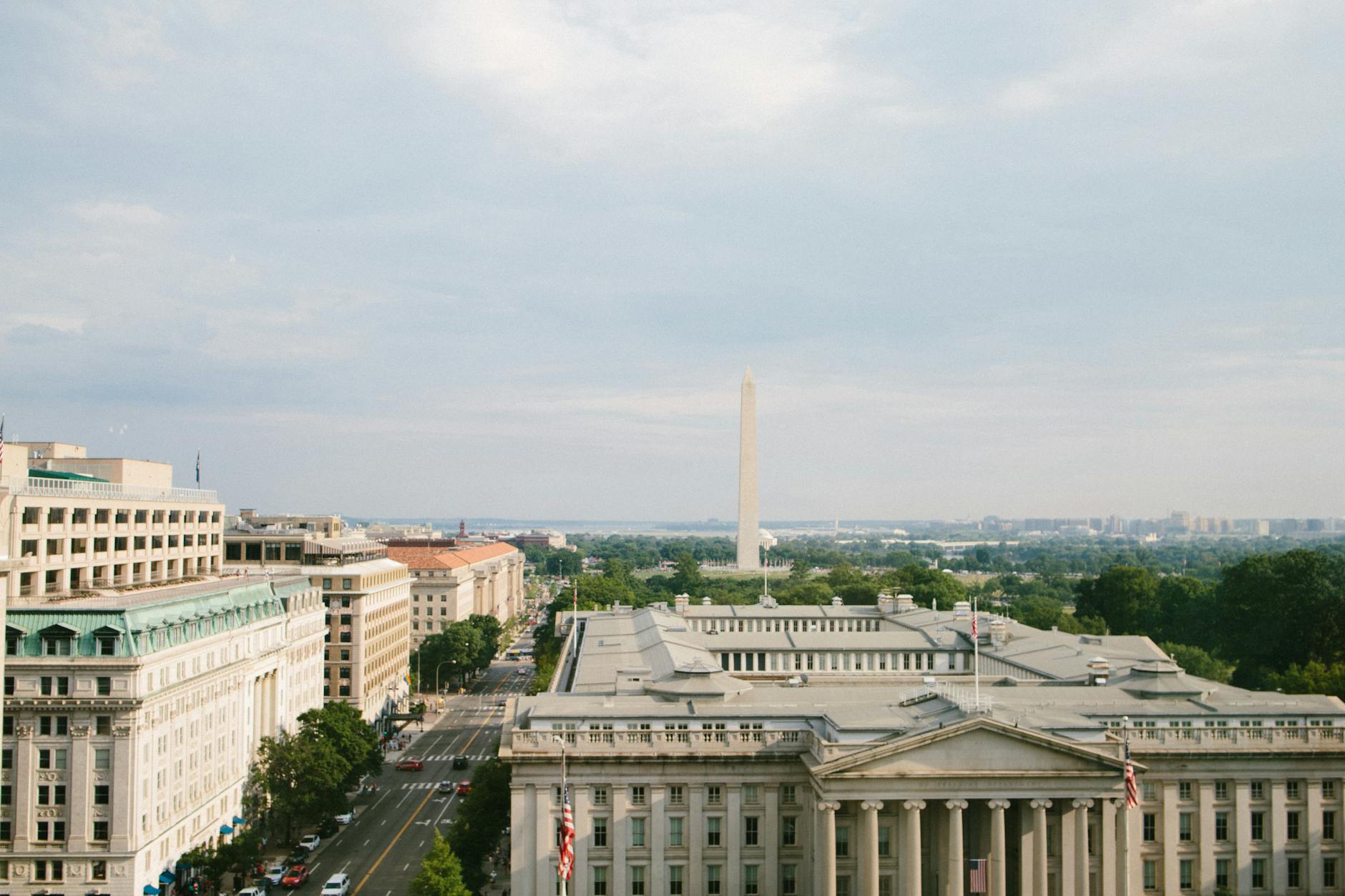Federal Reserve Winds Down Crypto Oversight Unit, Sparking Debate on Regulatory Future
Decision Signals Shift in Approach to Digital Assets, Raising Questions About Bank Involvement
The Federal Reserve, the central banking system of the United States, has officially disbanded a specialized internal group tasked with monitoring novel activities, including banks’ engagement with cryptocurrencies. The Novel Activities Supervision Program (NASP), established in 2023, was designed to provide a framework for the Federal Reserve to examine emerging trends and risks within the financial sector. Its dissolution is prompting considerable discussion among industry professionals, policymakers, and observers about the future of cryptocurrency regulation and the Federal Reserve’s role in overseeing digital asset innovation.
The move, first reported by CoinDesk, signifies a potential recalibration of the Fed’s strategy in addressing the complex and rapidly evolving landscape of digital currencies. While the Fed has not provided a detailed public explanation for the program’s closure, the decision has been met with varied interpretations, ranging from a streamlining of regulatory efforts to a potential de-emphasis on direct oversight of crypto-specific activities within traditional banking channels.
Context & Background
The creation of the Novel Activities Supervision Program in early 2023 came at a time when the U.S. financial regulatory environment was grappling with the increasing integration of digital assets into the broader economy. Banks, investment firms, and other financial institutions had begun exploring various avenues for engaging with cryptocurrencies, from offering custodial services to facilitating client trading and exploring the potential of central bank digital currencies (CBDCs). This burgeoning activity presented new challenges for regulators tasked with ensuring financial stability, consumer protection, and the integrity of the financial system.
Prior to the establishment of NASP, the Federal Reserve, along with other U.S. financial regulators like the Office of the Comptroller of the Currency (OCC) and the Securities and Exchange Commission (SEC), had issued various guidance statements and engaged in public consultations regarding banks’ involvement with crypto-assets. These efforts aimed to clarify the permissible activities for banks and to highlight potential risks, such as operational resilience, cybersecurity, money laundering, and consumer fraud.
The formation of NASP was seen by many as a proactive step by the Federal Reserve to consolidate its expertise and develop a more coherent approach to supervising these novel activities. The program was intended to foster a deeper understanding of emerging technologies and business models, enabling the Fed to provide more tailored and effective oversight. It was understood that the program would likely focus on areas such as stablecoins, decentralized finance (DeFi), and the custody and trading of digital assets by regulated financial institutions.
The landscape of cryptocurrency regulation in the United States has been characterized by a fragmented approach, with different agencies asserting jurisdiction over various aspects of digital assets. The SEC, for example, generally views many cryptocurrencies as securities, while the Commodity Futures Trading Commission (CFTC) has asserted authority over certain digital assets as commodities. This overlapping regulatory framework has created uncertainty for businesses operating in the crypto space and has been a subject of ongoing debate in Washington.
The decision to disband NASP, therefore, occurs within a broader context of regulatory uncertainty and evolving approaches to digital assets. It raises questions about how the Federal Reserve will continue to monitor and address the risks associated with cryptocurrencies and other novel financial activities without this dedicated internal unit. Observers are keen to understand whether this move signals a broader shift in the Fed’s priorities or a restructuring of its internal oversight mechanisms.
In-Depth Analysis
The shuttering of the Novel Activities Supervision Program by the Federal Reserve represents a significant development in the ongoing dialogue surrounding digital asset regulation in the United States. While the specific rationale behind the decision remains largely undisclosed by the Fed, several potential factors and implications warrant deeper examination. The program, though relatively short-lived since its inception in 2023, was intended to be a cornerstone of the Fed’s engagement with the rapidly evolving digital asset landscape.
One interpretation of the decision is that the Federal Reserve may be opting for a more integrated approach to supervision. Instead of housing crypto-specific oversight within a dedicated, novel program, the Fed might be aiming to embed this oversight within its existing supervisory structures. This could mean that expertise related to digital assets will be distributed across various departments responsible for bank supervision, risk management, and financial stability. Such a move could potentially lead to a more holistic understanding of how crypto-related activities interact with traditional banking functions and broader financial risks.
Another possibility is that the Fed is reassessing its direct involvement in supervising niche or emerging technologies. The fast-paced nature of the cryptocurrency market, characterized by rapid innovation and shifting regulatory definitions, can be challenging for a centralized program to keep pace with. The Fed might have concluded that a more flexible, principles-based approach, applied through its existing supervisory frameworks, would be more effective than maintaining a dedicated unit for what could be considered a subset of broader financial innovation.
The timing of this decision is also noteworthy. It comes at a period where U.S. regulators, including the Treasury Department, the SEC, and the CFTC, have been increasingly active in clarifying their stances on digital assets. Recent enforcement actions, proposed rulemakings, and legislative discussions have all contributed to a more defined, albeit still evolving, regulatory landscape. The Fed’s decision could be a response to these broader shifts, perhaps indicating a belief that the foundational principles for supervising banks’ engagement with crypto are becoming clearer and can be managed through existing channels.
Furthermore, the Federal Reserve has been actively involved in exploring the potential of a central bank digital currency (CBDC). This initiative, which has its own dedicated research and development efforts, might be influencing how the Fed prioritizes its resources and specialized expertise. If the Fed is prioritizing its own potential digital currency infrastructure, it might be reallocating the personnel and focus that were previously directed towards supervising private sector crypto activities.
The implications of dismantling NASP are multifaceted. For financial institutions that are exploring or currently engaged in crypto-related activities, this could lead to renewed uncertainty about the specific regulatory expectations and channels of communication with the Federal Reserve. While the Fed’s overall supervisory mandate remains, the absence of a designated specialist group might alter the way banks approach engagement and seek clarity on crypto matters.
Concerns have been raised by some industry participants that this move could signal a reduced emphasis on crypto oversight, potentially creating a more permissive environment for banks to engage with digital assets. However, it is equally plausible that the Fed intends to maintain a robust level of oversight, simply by re-orienting its internal structures. The key will be the effectiveness of the integrated approach and the extent to which expertise is maintained and applied consistently across the organization.
The legislative environment also plays a crucial role. As Congress continues to deliberate on comprehensive cryptocurrency legislation, the Federal Reserve’s specific role in oversight might be further clarified or even redefined by statute. The Fed’s internal restructuring could be a way to align its operational capabilities with anticipated legislative frameworks, or it could be a signal of its preferred approach to oversight in the absence of such comprehensive legislation.
In essence, the disbanding of NASP is not necessarily an abdication of responsibility but rather a potential strategic pivot. The success of this pivot will depend on the Fed’s ability to effectively integrate crypto-related supervision into its existing frameworks, maintain specialized knowledge, and communicate its expectations clearly to the financial industry. The long-term impact on the integration of digital assets within traditional finance will be closely watched.
Pros and Cons
The Federal Reserve’s decision to disband the Novel Activities Supervision Program (NASP) presents a mixed bag of potential advantages and disadvantages for the financial industry, regulators, and the broader economy. Understanding these pros and cons provides a more nuanced view of the Fed’s strategic shift.
Potential Pros:
- Streamlined Supervision: By integrating crypto oversight into existing supervisory structures, the Fed might achieve greater efficiency and reduce potential redundancies. This could lead to a more cohesive regulatory approach where digital assets are viewed as an extension of existing financial activities rather than a completely separate category.
- Holistic Risk Assessment: Embedding crypto expertise across different supervisory departments could foster a more integrated understanding of the risks associated with digital assets. This allows for a broader assessment of how crypto activities interact with traditional banking operations, systemic risk, and monetary policy transmission.
- Flexibility and Adaptability: A more decentralized approach to oversight could potentially allow the Fed to adapt more nimbly to the rapidly evolving nature of the digital asset landscape, without being constrained by the specific mandate of a single, dedicated program.
- Focus on Core Functions: The Fed may be redirecting resources and specialized talent towards its core functions, such as monetary policy, payments system stability, and the potential development of its own digital currency, while still maintaining oversight of private sector digital asset engagement through established channels.
- Reduced Bureaucratic Layers: Eliminating a specialized unit might reduce bureaucratic layers, potentially speeding up decision-making and communication pathways for banks dealing with crypto-related issues.
Potential Cons:
- Loss of Specialized Expertise: A dedicated program often fosters deep, specialized knowledge. Dissolving NASP could lead to a diffusion of this expertise, potentially diminishing the Fed’s ability to effectively identify and address the unique risks presented by cryptocurrencies and blockchain technology.
- Increased Regulatory Uncertainty: Without a clear, dedicated point of contact or program, financial institutions might experience increased uncertainty regarding regulatory expectations and how to best engage with the Fed on crypto matters. This could stifle innovation or lead to inconsistent compliance.
- Risk of Inconsistent Application: If crypto oversight is spread across multiple departments, there’s a risk of inconsistent application of regulations and supervisory standards, depending on the specific expertise and focus of each department.
- Perception of De-emphasis: The disbanding of a program specifically designed for novel activities, including crypto, could be perceived by the market as a reduced priority for the Fed regarding digital asset oversight, potentially encouraging riskier behaviors by financial institutions.
- Challenges in Monitoring Rapid Innovation: The cryptocurrency space evolves at an unprecedented pace. A dedicated program, by its nature, is often better equipped to track these rapid changes and develop specialized supervisory methodologies compared to a more generalized approach.
Key Takeaways
- The Federal Reserve has officially dissolved its Novel Activities Supervision Program (NASP), a unit established in 2023 that was intended to oversee emerging financial activities, including banks’ involvement with cryptocurrencies.
- This decision may signal a shift in the Fed’s approach to digital asset regulation, potentially moving towards integrating crypto oversight into existing supervisory structures rather than maintaining a dedicated, specialized unit.
- Possible reasons for the dissolution include a desire for streamlined supervision, a more holistic assessment of risks, and an effort to adapt to the evolving regulatory landscape and the rapid pace of innovation in digital assets.
- The move could lead to both benefits, such as greater efficiency and integrated risk assessment, and drawbacks, including a potential loss of specialized expertise and increased regulatory uncertainty for financial institutions.
- The long-term effectiveness of this decision will depend on the Federal Reserve’s ability to maintain and apply expert knowledge within its existing frameworks and to clearly communicate its expectations to the industry.
- The decision occurs within a broader context of ongoing legislative and regulatory efforts in the U.S. to define the framework for digital assets.
Future Outlook
The Federal Reserve’s decision to disband the Novel Activities Supervision Program marks a pivotal moment in the ongoing evolution of U.S. financial regulation concerning digital assets. The future outlook is likely to be shaped by several key factors. Firstly, the effectiveness of the Fed’s integrated supervisory model will be crucial. If the Fed can successfully embed deep expertise in digital assets across its various banking supervision departments, it may prove to be an efficient and robust approach. Conversely, a failure to maintain specialized knowledge could lead to gaps in oversight.
Secondly, the broader regulatory environment will continue to play a significant role. As Congress deliberates on comprehensive legislation for digital assets, the Federal Reserve’s role and responsibilities in this domain could be further clarified or redefined. The Fed’s internal restructuring may be a way to preemptively align its operational capacity with anticipated legislative changes, or it might be a strategic move in anticipation of specific regulatory powers being granted or withheld.
The development of a central bank digital currency (CBDC) by the Federal Reserve, if pursued, will also undoubtedly influence its approach to private sector digital assets. Resources and expertise dedicated to a potential Fed-issued digital currency might draw from or inform the Fed’s oversight of private cryptocurrencies. The interplay between these two facets of digital currency development will be a key area to monitor.
Furthermore, the reaction of financial institutions will be telling. If banks perceive this move as a reduced focus on crypto oversight, it could embolden them to pursue more aggressive digital asset strategies. However, it is also possible that institutions will seek greater clarity and may even advocate for more structured guidance from the Fed, even without a dedicated program. The industry’s ability to navigate this new landscape and the Fed’s responsiveness to industry feedback will shape the future trajectory.
Ultimately, the future outlook hinges on the Federal Reserve’s commitment to vigilant oversight, its ability to adapt to technological advancements, and its capacity to foster a stable and innovative financial ecosystem in the digital age. The disbanding of NASP is not necessarily an end to oversight, but rather a potential beginning of a new chapter in how the Fed approaches the complex and dynamic world of digital assets.
Call to Action
The Federal Reserve’s decision to wind down its dedicated cryptocurrency oversight unit underscores the dynamic and often uncertain nature of digital asset regulation in the United States. As financial institutions, investors, and the public navigate this evolving landscape, proactive engagement and informed dialogue are essential. We encourage:
- Financial Institutions: To proactively seek clarity on regulatory expectations from the Federal Reserve and relevant agencies regarding their digital asset activities. Consider increasing internal expertise and robust risk management frameworks tailored to crypto, even in the absence of a specific supervisory program. Share insights and best practices with regulators to foster a collaborative regulatory environment.
- Policymakers: To continue their efforts in developing comprehensive and clear legislative frameworks for digital assets. This clarity is crucial for providing certainty to the market and ensuring effective oversight that balances innovation with financial stability and consumer protection.
- Industry Observers and Analysts: To critically assess the implications of the Fed’s decision, monitoring closely how crypto oversight is integrated into existing structures and the resulting impact on market development and risk management.
- The Public: To remain informed about the regulatory developments surrounding digital assets and their potential impact on the financial system. Understanding these shifts is key to making informed financial decisions and participating effectively in public discourse.
The Federal Reserve’s structural adjustments highlight the need for ongoing vigilance and adaptive strategies in the realm of digital finance. Continued communication and collaboration between all stakeholders are paramount to ensuring a responsible and sustainable future for digital assets within the traditional financial system.









